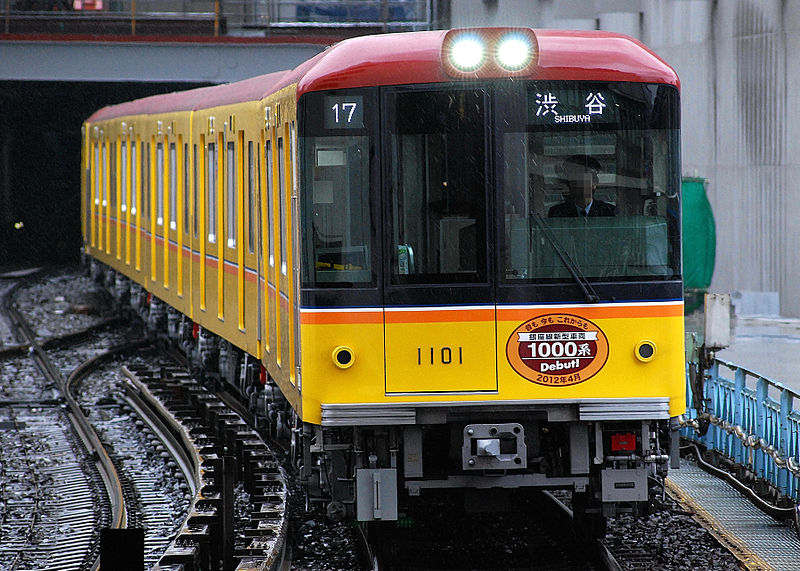|
Length: 14.3km
Stations: 19 Gauge: 1435mm Electric system: 600V DC Tokyo Metro/TRTA Trains1000 Series (2012 - Present)
01 Series (1984 - Present)
Class 2000 (1959 - 1993)
Series 1000 photo courtesy of
Toshinori Baba Series 01 photo couretsy of The RW Place Class 2000 photo courtesy of Uraken.net |
Tokyo Metro Ginza LineShibuya - Omotesando - Gaienmae - Aoyama-itchōme - Akasaka-mitsuke -
Tameike-sanno - Toranomon - Shimbashi - Ginza - Kyobashi - Nihombashi - Mitsukoshimae - Kanda - Suehirocho - Ueno-hirokoji - Tabaracho - Ueno - Inaricho - Asakusa The Tokyo Metro Ginza Line was the first subway built in the Orient and currently connects Shibuya Station with Asakusa Station, both in Tokyo. It is a busy line that runs through many of the business districts of Tokyo.
The Ginza Line does not directly connect with any other line because it runs on standard gauge tracks (1435mm) and uses a third rail instead of overhead lines to power itself. The first section of the modern day Ginza Line was built in 1927 by Tokyo Chikatetsudo and connected Asakusa and Ueno. It was extended to Shimbashi by 1934. The Shibuya to Shimbashi section was built by Tokyo Kosoku Tetsudo, a company owned by the present Tokyu Corporation, and connected directly with the Asakusa - Ueno portion. In 1941, both sections were combined and put under the control of the Teito Rapid Transit Authority (TRTA) and remained that way until they were handed over to Tokyo Metro in 2004. It was named by the TRTA the Ginza Line in 1953. One problem that has plagued the Ginza Line since the post-war growth period is the size of the tunnels and stations. Being the oldest subway in all of Japan, the Ginza Line wasn't designed to carry a large amount of people and expanding them is not a practical option. Because of this, the trains are only 6 cars long and each car is 16m long. For comparison, the Hanzomon Line, which was built as a bypass, operates 10 car long trains with 20m cars. The small size of the tunnel also meant that it was impossible to install air-conditioning units until compact units were created in the 1990s. Major Stations Asakusa Station Asakusa is one of the most popular tourist destinations in all of Japan and is famous for the impressive Sensoji Temple. Asakusa Station is a good base of operations for exploring the Shitamachi Area of Tokyo. It is also near the new Tokyo Sky Tree. You can change to the Toei Subway Asakusa Line and Tobu Isezaki Line at this station. Shibuya Station Shibuya is one of the terminals for the Ginza Line and also the only above-ground station on the entire line. Shibuya is actually at the bottom of a small valley and the Ginza Line comes out of the side of the hills and into the third floor of a department store where the station is located. You can change to the Tokyo Metro Hanzomon and Fukutoshin Lines, Tokyu Toyoko and Denentoshi Lines and also the JR Yamanote, Saikyo and Shonan-Shinjuku Lines at Shibuya Station. |





